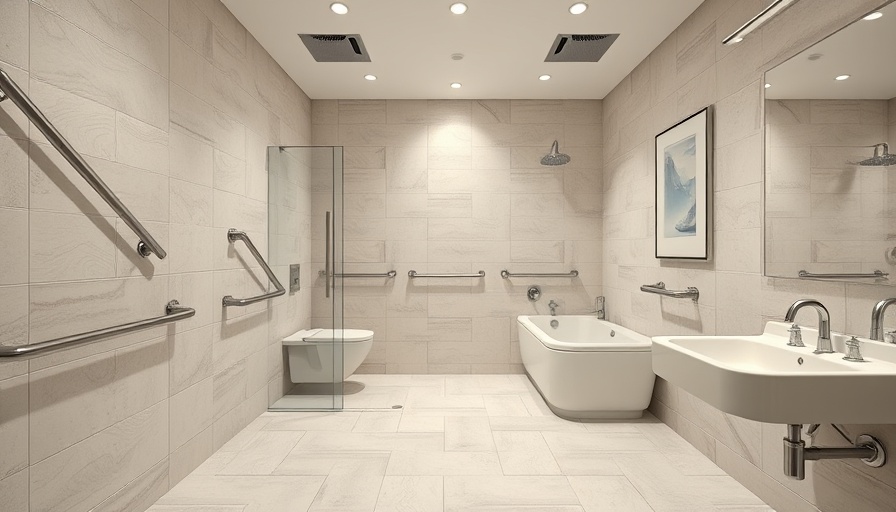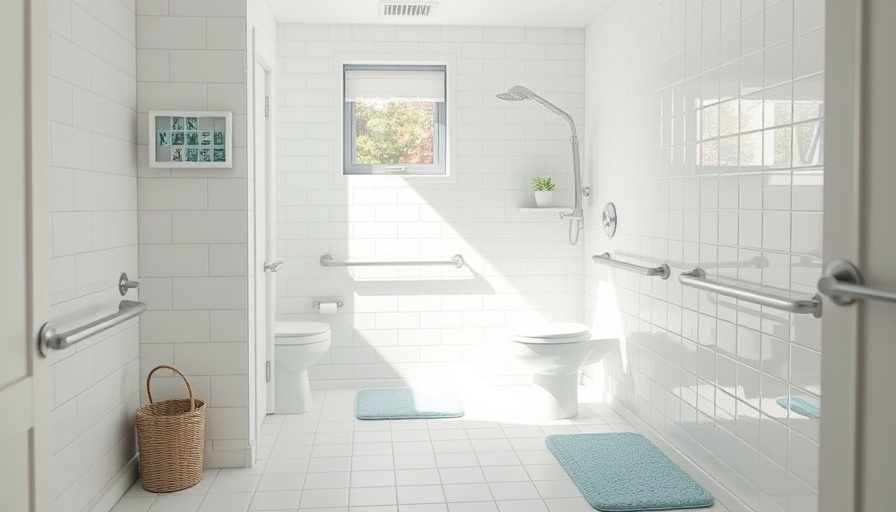
Transitioning to an Accessible Environment
As our population ages and more individuals face mobility challenges, transitioning from stairs to a safe and accessible home environment isn’t just a luxury; it’s a necessity. Local accessibility consultants are stepping up to provide invaluable insights into enhancing home safety and inclusivity, ensuring that everyone feels comfortable in their living spaces.
The Crucial Need for Accessibility Enhancements
Accessibility enhancements are, above all, about dignity and independence. They are not merely additions but rather essential modifications that allow individuals to navigate their spaces with confidence. The emotional toll of living in an environment that isn’t accommodating can lead to feelings of isolation and frustration. Accessibility consultants argue that addressing these needs is vital, fostering an atmosphere where everyone can thrive in their homes.
Common Barriers in Our Homes
Despite the increasing awareness of accessibility needs, many homes fall short. Common barriers like steep stairs, narrow doorways, and uneven floors can create hazardous environments. Stairs, in particular, remain a significant impediment, often isolating individuals from key areas of their home, such as kitchens or bathrooms. Accessibility consultants recommend removing or modifying stairs, favoring ramps or lifts for a more seamless transition through living spaces.
Identifying Essential Modifications
When it comes to making homes safer, certain modifications stand out. The installation of ramps can vastly improve accessibility for wheelchairs and walkers, making daily activities less daunting. However, simply installing a ramp isn’t enough; factors like incline, surface material, and location must be carefully considered. Accessibility consultants emphasize that adequate planning can prevent future issues and ensure a smooth transition.
The Importance of Grab Bars
Equipping homes with grab bars is another crucial modification that can significantly enhance safety. These support mechanisms are invaluable in areas like bathrooms and hallways, mitigating the risks of falls, which are a leading cause of injury among the elderly. Strategic placement based on individual needs ensures that these additions are functional and secure, allowing for greater ease of movement.
Bathroom Safety: A Core Focus
Bathrooms can be particularly challenging when it comes to accessibility. Many older designs lack essential features like non-slip surfaces, grab bars, and adequate space. Enhancing bathroom safety benefits not just mobility but also the overall functionality of the home. Simple adjustments can lead to an inclusive space that supports independence.
Fostering Community Awareness
While individual home modifications are vital, community awareness also plays a crucial role. Encouraging conversations about accessibility and its importance can lead to broader changes in housing and urban planning. Accessibility consultants advocate for inclusive design principles, which can shape future infrastructures to be more accommodating for all.
Future Predictions: Trends in Accessibility
Looking ahead, trends in accessibility will likely continue to grow. As technology advances, we may see smarter solutions for improving home safety—think sensor-activated lights for higher visibility or voice-controlled devices to assist with daily tasks. The push for inclusivity doesn’t just enhance life for those with mobility challenges; it can enrich our communities as a whole.
Next Steps: Adopting Accessibility Modifications
For homeowners ready to take action, the first step involves consulting with accessibility professionals who can assess personal needs and recommend modifications. Prioritizing changes not only improves safety but also cultivates a welcoming environment for all family members and guests. It’s not just about making changes to a home; it's about embracing a lifestyle that values accessibility and inclusivity.
Conclusion: Making Homes for Everyone
The journey toward an accessible home involves understanding the unique needs of individuals and the possibilities available to enhance their living environment. By being proactive about accessibility, we not only empower those living with mobility challenges but also build a community that values the contributions of every member. If you or a loved one requires assistance in making your home safer, reach out to local accessibility consultants for expert guidance. Together, let's create spaces that foster independence, dignity, and a sense of belonging for all.
 Add Row
Add Row  Add
Add 




 Add Row
Add Row  Add
Add 

Write A Comment